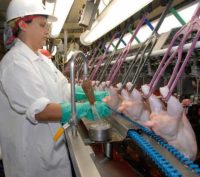Agriculture Secretary Tom Vilsack today announced a new report on scientific breakthroughs discovered by USDA researchers that led to new patents and inventions with the potential for commercial application and potential economic growth. Among those breakthroughs are antimicrobial packets that keep food from spoiling and flour made out of chardonnay grape seeds that prevents weight gain.
"Studies have shown that every dollar invested in agricultural research returns $20 to the economy. We have accelerated commercialization of federal research and government researchers are working closely with the private sector to develop new technology and transfer it to the marketplace," said Secretary Vilsack. "USDA has a proven track record of performing research that benefits the public."
USDA reports receiving 51 patents, filing 147 patent applications, and disclosing 180 new inventions in the last fiscal year, which are detailed in the Department's 2013 Annual Report on Technology Transfer released today. Helping drive these innovations, USDA has 259 active Cooperative Research and Development Agreements with outside investigators, including universities and small businesses. The USDA's technology transfer program is administered by the Agricultural Research Service (ARS), USDA's principal intramural scientific research agency.
Food-related discoveries in the 2013 Technology Transfer Report include:
- A small packet that when inserted in small fruit containers releases an antimicrobial vapor that helps keep fresh fruit from rotting on the shelf (page 66);
- A new kind of flour made from chardonnay grape seeds that can prevent increases in cholesterol and weight-gain (the Mayo Clinic is currently conducting human clinical trials on the product);
- Oat concentrates, a digestible, functional food from oats licensed for the production of Calorie-Trim and Nutrim;
- A computer-based model of the fluid milk process to lower greenhouse gas emissions (the model has been distributed to more than 100 processors in the United States and should help the dairy industry realize its goal of reducing greenhouse gas emissions by 25 percent per gallon of milk by 2020).
"Over the years, USDA innovations have created all sorts of products Americans use every day," a USDA press release stated, and listed frozen orange juice concentrate and almost all breeds of blueberries and cranberries currently in production, as well as 80% of all varieties of citrus fruits grown in the U.S. as examples.
USDA officials also stated that the 2014 Farm Bill will help to build on these accomplishments by establishing a new Foundation for Food and Agriculture Research that leverages $200 million in public funding and another $200 million from the private sector to support groundbreaking agricultural research.
The full report (3.34 MB pdf, 209 pages) may be downloaded here.




